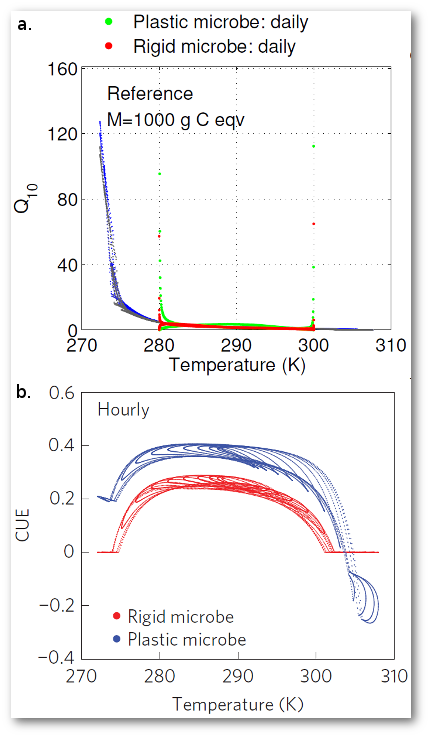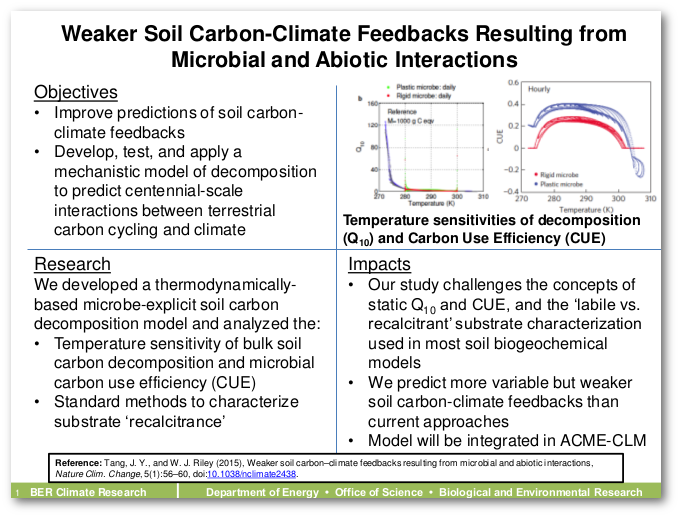Research Highlights
Weaker Soil Carbon–Climate Feedbacks Resulting from Microbial and Abiotic Interactions
January 1, 2015
Objective
- Improve predictions of soil carbon–climate feedbacks
- Develop, test, and apply a mechanistic model of decomposition to predict centennial-scale interactions between terrestrial carbon cycling and climate
Research
We developed a thermodynamically-based microbe-explicit soil carbon decomposition model and analyzed the
- temperature sensitivity of bulk soil carbon decomposition and microbial carbon use efficiency (CUE) and
- standard methods to characterize substrate “recalcitrance.”
|
Results/Impacts
- Our study challenges the concepts of static Q10 and CUE, and the “labile vs. recalcitrant” substrate characterization used in most soil biogeochemical models.
- We predict more variable but weaker soil carbon–climate feedbacks than current approaches.
- Model will be integrated in ACME-CLM.
Tang, Jinyun, and William J. Riley. January 1, 2015. “Weaker Carbon–Climate Feedbacks Resulting from Microbial and Abiotic Interactions.” Nature Clim. Change, 5(1):56–60. doi:10.1038/nclimate2438.

